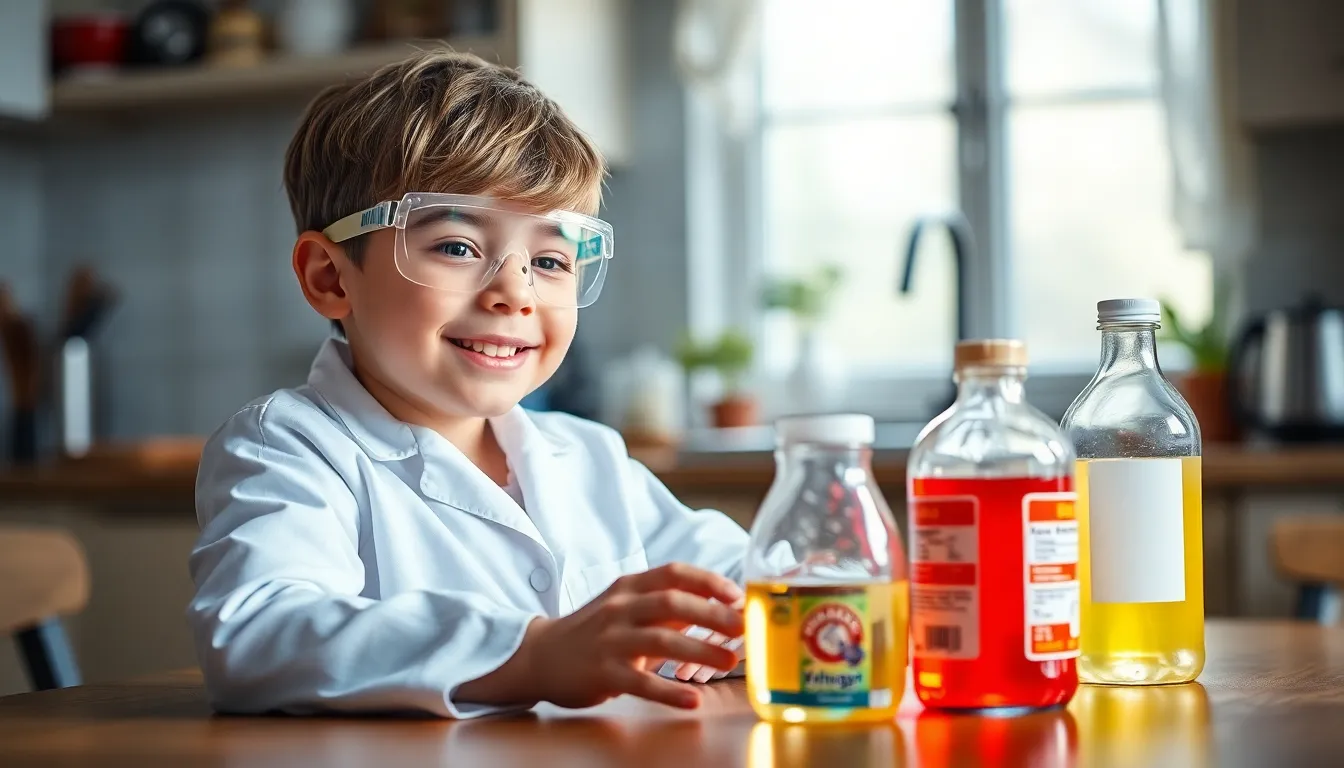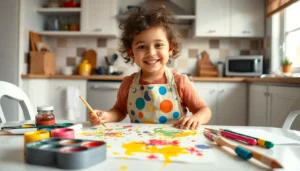Table of Contents
ToggleScience isn’t just for lab coats and serious faces—it’s an adventure waiting to unfold right in your living room! Imagine transforming everyday items into mind-blowing experiments that’ll have your kids giggling and gasping in amazement. From fizzing volcanoes to colorful chemical reactions, these science experiments for kids are the perfect mix of fun and education.
Benefits Of Science Experiments For Kids
Science experiments offer numerous advantages for children. Engaging in hands-on activities excites kids, making learning enjoyable.
Fostering Curiosity
Experiments ignite children’s natural curiosity. They ask questions, seek answers, and explore the world around them. Observing reactions and results stimulates their imagination. Children learn to look beyond the surface and discover how things work. This exploration leads to a deeper understanding of scientific concepts. Curiosity-driven learning shapes critical thinkers who pursue knowledge eagerly.
Encouraging Critical Thinking
Critical thinking skills develop through analyzing experimental results. Kids learn to hypothesize and test their ideas effectively. When experiments don’t go as planned, children evaluate what went wrong and adjust their methods. Problem-solving becomes an integral part of their learning process. Engaging in scientific inquiry teaches them to think logically and make informed decisions. These essential skills extend beyond science, benefiting various aspects of their lives.
Types Of Science Experiments For Kids
Exploration comes in many forms when it comes to science experiments for kids. Engaging in varied types of experiments keeps children excited and interested in learning.
Chemistry Experiments
Chemistry experiments offer colorful reactions and hands-on engagement. Simple projects like vinegar and baking soda create fizzing volcanoes. These experiments allow kids to observe gas release and foam formation. Additionally, making homemade slime teaches about polymers. Children gain understanding of chemical reactions while having fun. Each experiment reinforces curiosity about everyday substances and their interactions.
Physics Experiments
Physics experiments focus on motion, energy, and forces. Building simple machines, such as levers and pulleys, demonstrates basic principles of mechanics. Kids can also explore gravity with drop tests using different objects. These hands-on demonstrations help to visualize concepts like acceleration and friction. Balancing scales can introduce the idea of equilibrium. Through experimentation, children learn to apply physics concepts to real-world scenarios.
Biology Experiments
Biology experiments connect children with the living world. Growing plants in different soil types showcases how soil affects growth. Observing mold growth on bread provides insights into fungi and decay. Dissecting flowers introduces basic plant anatomy. Additionally, studying insects through live observation encourages respect for nature. These activities cultivate a sense of responsibility towards living organisms and the environment.
Easy Science Experiments To Try At Home
Simple science experiments provide exciting opportunities for kids to explore concepts using household items. Engaging in these activities boosts curiosity while making learning fun.
Kitchen Science Projects
Kitchen items often serve as the best tools for science experiments. Baking soda and vinegar create an exciting fizzing volcano. Mixing cornstarch and water generates an intriguing “oobleck,” demonstrating non-Newtonian fluids. Kids can make homemade butter by shaking cream in a jar to observe changes in state. Experimenting with food coloring in water showcases capillary action when kids place celery stalks in different colored water. These hands-on activities not only entertain but also introduce essential scientific principles.
Outdoor Science Activities
Outdoor settings offer ample opportunities for exploring nature. Kids can build a simple sundial to learn about time and shadows using a stick and a flat surface. Observing and documenting plant growth in various soil types measures growth rates and teaches about ecosystems. They can also create a mini weather station to track temperature, rainfall, and wind direction. Using a magnifying glass, they can investigate insects, sparking interest in biology. All these activities promote learning while enjoying fresh air and nature.
Safety Considerations
Safety plays a crucial role in conducting science experiments for kids. Careful planning and adherence to precautions ensure a fun and educational experience.
Supervision Guidelines
Active adult supervision is essential during all experiments. Parents or guardians should oversee any activity, particularly those involving potentially hazardous materials. This supervision helps prevent accidents and encourages kids to ask questions. Setting clear rules about safe behavior in the lab can foster understanding of safety protocols. Involvement from adults not only enhances safety but also deepens the learning experience. Engaging with children during experiments can create a supportive environment, making science more enjoyable and accessible.
Essential Safety Gear
Using appropriate safety gear can significantly reduce the risk of injury. Safety goggles protect eyes from splashes or debris during experiments. Gloves provide a barrier when handling substances that can irritate the skin. Aprons or lab coats can prevent spills on clothing, ensuring a tidy workspace. In cases involving heat, insulated gloves protect hands from burns. Kids should understand the importance of wearing this gear before starting any experiment. By prioritizing safety gear, families can cultivate a responsible approach to scientific exploration.
Conclusion
Engaging in science experiments opens a world of discovery for kids. These hands-on activities not only spark curiosity but also nurture critical thinking skills. By using everyday items, children can explore scientific concepts in a fun and interactive way.
Safety remains a top priority during these experiments. With proper supervision and safety gear, families can ensure a secure environment for exploration. Encouraging kids to ask questions and investigate their surroundings fosters a lifelong love for learning.
Ultimately, the joy of scientific discovery can lead to a brighter future, equipping children with essential skills and knowledge that extend far beyond the classroom.








